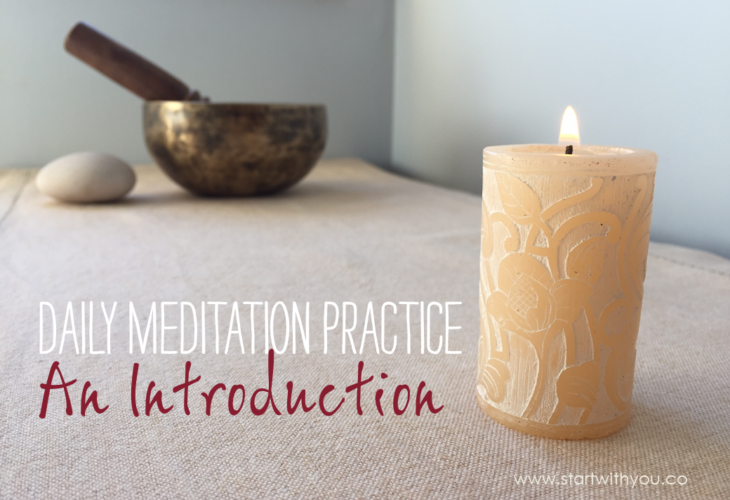Meditation has become known as one of the most effective ways to relieve stress, find more peace of mind and build mental resilience. It’s also a doorway to spiritual growth for many seekers.
For someone wanting to simply make a start, it can feel a little daunting.
Where do I start? What kind of meditation should I do? How do I sit for? When will I do it? Once I’m sitting on my cushion (or chair), what do I actually DO?
I believe it can be very simple, and the more simple it is, the more likely you are to actually do it – and if you do it you will actually benefit from it. Not exactly rocket science!
Catch my recent VLOG here where I share my tips and guide you through a small mindfulness meditation. (This is a bonus class that features in my 7-week resilience programme – a self-study online course to help you get out of the stress cycle, feel more in control at work and enjoy life again. Check out the programme here).
One thing I’ve learned that was really comforting when I was trying to get started is that you don’t even have to enjoy your meditation practice every time you do it to reap the benefits! Profession Mark Williams (UK) looked into this and found that it wasn’t the most enthusiast meditators that got the most benefit, it was those who practiced the most regularly – regardless of how much they actually enjoyed it. Soon after I discovered this I also heard that Jon Kabat Zinn – arguably the grandfather of mindfulness in the west – is famous for saying that you don’t have to love it, you just have to do it.
You don’t have to love it, you just have to do it.
Oodles of research shows the multiple benefits of meditation, from lowering stress, blood pressure and cortisol levels, to cultivating more mental resilience, concentration and better decision making, and so on it goes. It is a great go-to if you want to lower stress and feel more ease in your day.
Simplicity
So, as I have said, practising meditation can be very simple, and I highly recommend keeping it that way!
You just need 3 ingredients –
1. Somewhere to sit quietly
2. A simple practice
3. 5-10 mins
I’ve found that the best time to do this is quite individual. Work out when is the best time for you – when you wake up in the morning or when you get into bed at night? When everyone else has left the house in the morning? Meditating as soon as you get home from work can be a nice way to decompress from the day and go into your evening refreshed and with your tank filled up. Experiment and find a time that suits you.
Then sort logistics – do you have a comfortable place to sit? Do you need a cushion under you? Do you need a chair rather than a cushion to sit on? That is my personal preference. Set it up so you can have a comfortable and supportive experience.
Claim this space for yourself. Let people know in the house that you are sitting for ten minutes and don’t want to be disturbed. This is a completely reasonable thing to ask of others. Put a sign on the door if necessary. Put your phone to flight mode or at least on silent – or out of the room altogether if you’re not using it to guide your meditation.
Breath Awareness Meditation
A great place to begin if you are new to it or want to refresh your meditation practice is the simple mindfulness based practice of breath awareness I share in the video. My approach to this is inspired by the three steps in Professor Mark Williams’ Breathing Space meditation. Step 1 – Awareness of the body and what is. Step 2 – Focus on the breath in this moment. Step 3 – Expanding awareness back out to the whole body and the space around you.
You can listen to the guided session in my video above, but also practice on your own even if you don’t have a recording. It is simple and portable.
In my recording I emphasise the gentleness with which we can bring to guiding our wandering mind back to the breath. And I say practice, because, well, even the most seasoned practitioners know they are always ‘practising’ meditation – rather than aiming for some kind of excellence or perfection around it.
Feel free to download any of my FREE guided meditations here if you’d like to practice further.
In practicing meditation for a few minutes a day, you naturally start to cultivate more stillness in the mind, more concentration and peace, and more mental resilience overall – all very useful when you want to be at your best and happiest – at work and in life.
Karen x
Pass it on! Share with others here …




